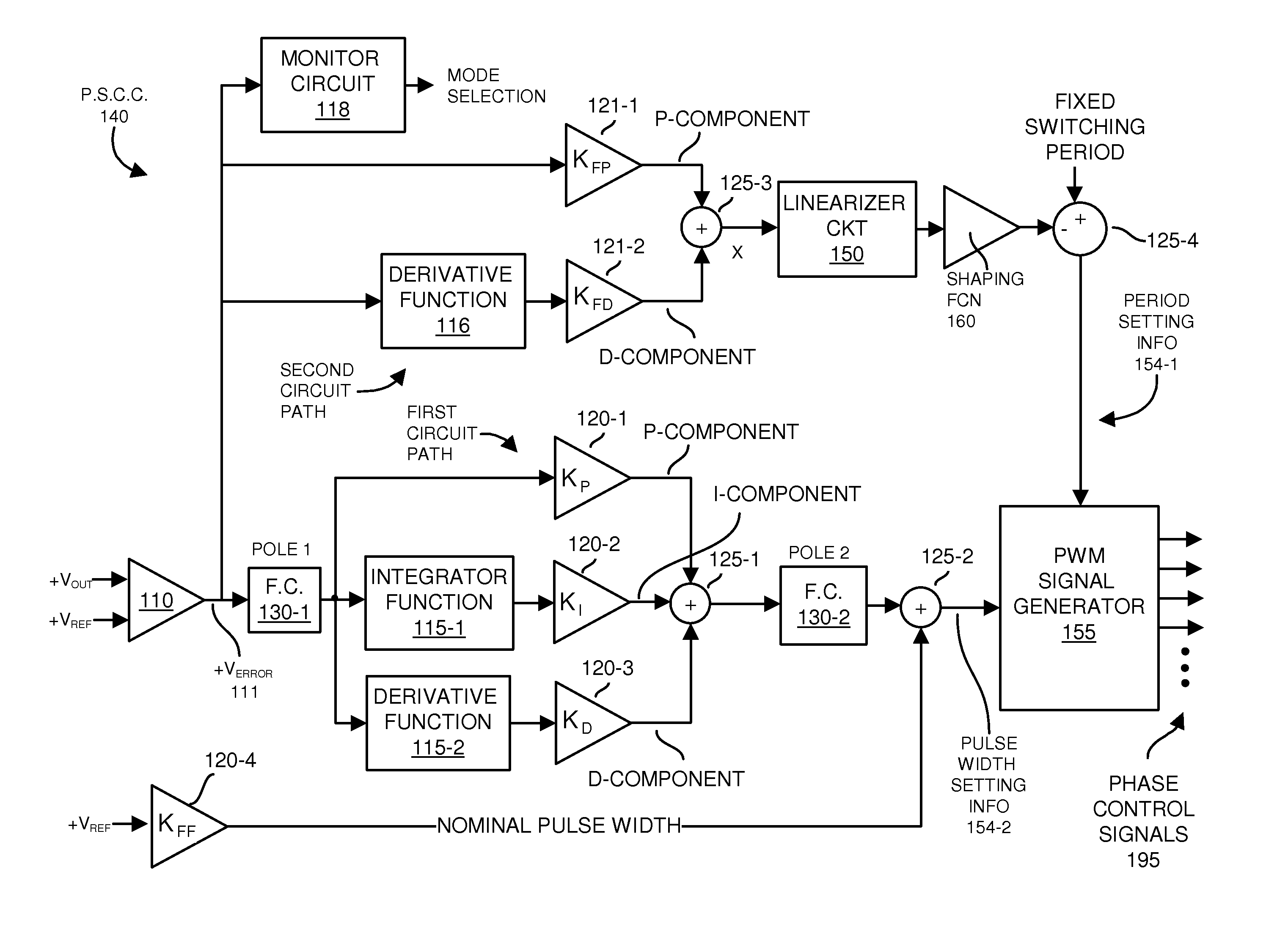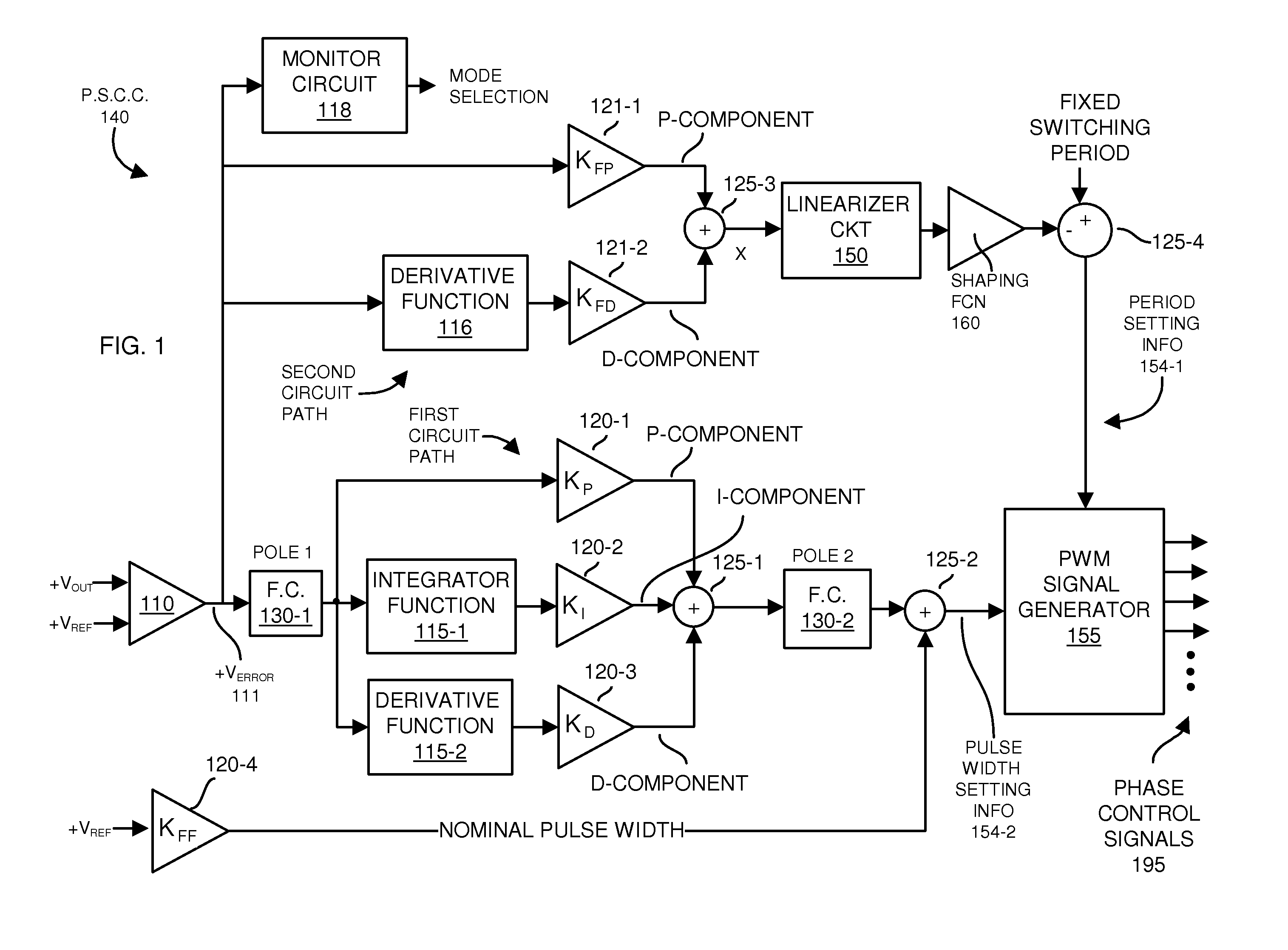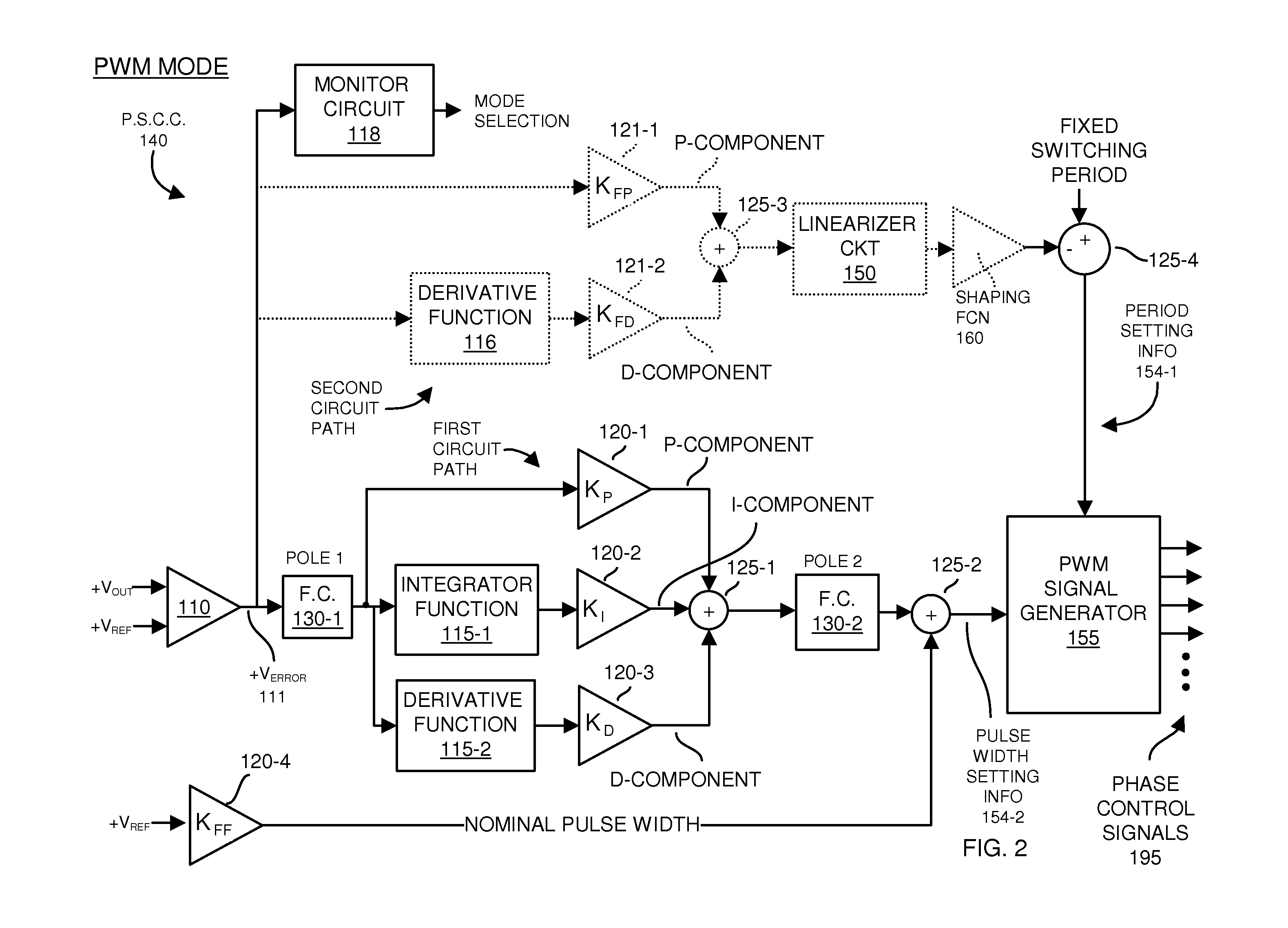Power supply circuitry and adaptive transient control
a power supply circuit and transient control technology, applied in the direction of process and machine control, image enhancement, instruments, etc., can solve the problems of reducing and producing output voltages with magnitudes, so as to improve the efficiency of power supply circuits and control the effect of speeding up the control response, reducing time, and increasing curren
- Summary
- Abstract
- Description
- Claims
- Application Information
AI Technical Summary
Benefits of technology
Problems solved by technology
Method used
Image
Examples
Embodiment Construction
[0038]Embodiments herein include a multi-path control circuit configured to switch between operating in a pulse width modulation module and a pulse frequency modulation mode. A first circuit path of the multi-path control circuit supports the pulse width modulation mode; a second circuit path of the multi-path control circuit supports the pulse frequency modulation mode. When in the pulse width modulation mode, the control circuitry utilizes the first circuit path to adjust a pulse width setting for a pulsed control signal having a substantially fixed frequency. In the pulse frequency modulation mode, the control circuitry uses the second circuit path to adjust a period setting (e.g., frequency) for a pulsed control signal having a substantially fixed pulse width.
[0039]More specifically, FIG. 1 is an example diagram of power supply control circuitry according to embodiments herein. During operation, the power supply control circuitry 140 generates one or more phase control signals 1...
PUM
 Login to View More
Login to View More Abstract
Description
Claims
Application Information
 Login to View More
Login to View More - R&D
- Intellectual Property
- Life Sciences
- Materials
- Tech Scout
- Unparalleled Data Quality
- Higher Quality Content
- 60% Fewer Hallucinations
Browse by: Latest US Patents, China's latest patents, Technical Efficacy Thesaurus, Application Domain, Technology Topic, Popular Technical Reports.
© 2025 PatSnap. All rights reserved.Legal|Privacy policy|Modern Slavery Act Transparency Statement|Sitemap|About US| Contact US: help@patsnap.com



